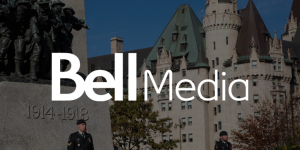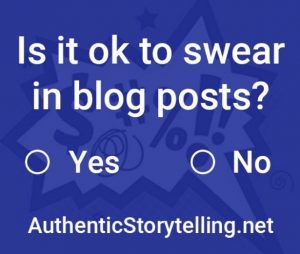If following the news is part of your everyday life, then you’ve probably come across the term NFT several times in the last few months. The acronym that stands for Non-Fungible Token was elected the word of the year by Collins Dictionary, with a meteoric growth in its use of more than 11,000% in 2021. The reason for this increase is that last year NFTs generated $23 billion dollars in negotiations according to the 2021 Dapp Industry Report, and everyone seems to want to know how to enter this billion dollar market.
Companies from all over the world have joined the NFTs race as a way to rethink their branding and be closer to markets that are still underexplored. But, what are NFTs anyway?
About NFT and Blockchain
As I said, NFT is an acronym that stands for non-fungible token. In technology, the word token can be defined as a digital representation of an asset. Non-fungible means that something cannot be replaced with something else. An easy way to exemplify what is a non-fungible asset is the art market: how many paintings by Van Gogh are worth a Mona Lisa? There is no such relationship, as they are unique, distinct and irreplaceable works. On the other hand you can exchange a $10 dollar bill for 2 of $5 dollars because they are fungible.
These unique, distinct and irreplaceable electronic codes are recorded by the blockchain system, which is the same technology used in cryptocurrencies, such as Bitcoin. The blockchain system records transactions in an encrypted form and the information included in the blockchain cannot be changed, in theory. In this way, the single file of the digital asset is connected with the single certificate generated by the blockchain, guaranteeing the authenticity and ownership of that asset. In general words, NFT is a unique digital certificate, registered on a blockchain, which is used to register ownership of an asset such as a work of art or a collectible.
Any person or company can link their assets, whether digital or physical, to an NFT, just look for a company that does the service and a fee is usually paid for the creation of these digital assets. These assets are usually traded on marketplaces, such as OpenSea and Rarible, which act as showcases where NFT owners can leave them exposed to receive purchase offers.
How are brands using them and what results are they getting from it?
NFTs became popular due to millionaire transactions for works of art such as the Beeple’s The First 5000 Days and by celebrities joining the movement as belonging to a club that has exclusive assets. Neymar, Jimmy Fallon, Eminem and Snoop Dogg have images of monkeys generated by algorithms, the Bored Ape Yacht Club, bought for millions of dollars.
Although they became famous due to these events, NFTs are an emerging technology. There is a blue ocean of possibilities for brands and it is already possible to see some microtrends emerging due to new behaviors and technological innovations. After its popularization, it was possible to observe companies from various sectors adopting branding strategies using NFTs as power to connect with customers and do new business.
Clothing
Some companies have been working with the connection between the physical and the digital.
This is the case for companies like GAP and Adidas, which have created exclusive NFT collections that enable the buyer to access physical pieces exclusively. The strategy behind these initiatives is mainly aimed at heating the spirit of community and exclusivity behind the brands, strengthening the idea of creating fan clubs and customer loyalty.
Other clothing brands have decided to adopt collaboration strategies. This is the case of Gucci and Nike, which invested in shares with companies and artists to create apparel collections available on NFT in exclusive partnerships expanding its visibility and reputation.
By the way, Adidas has also jumped on the bandwagon of collaborations and launched a collection in collaboration with Bored Ape Yacht Club, the same one with the celebrity monkeys. It is possible to see the penetration of brands in partnership with digital game markets, for example. This guarantees brands access to customers on a platform previously underexplored in terms of marketing: games.
Food sector
NFTs are not unique to the apparel industry. In the food sector, McDonalds adopted a visibility strategy to warm the hearts of its most loyal consumers in the United States in celebration of the 40th anniversary of the fast food chain’s favorite hamburger: the McRib.
i present to u the most important NFT. RT for a chance to win one of ten exclusive #McRibNFT
— McDonald's (@McDonalds) November 1, 2021
no purch. nec. 50 U.S./DC, 18+ only. winners need crypto wallet to receive NFT. rules: https://t.co/2QRhsPlpur pic.twitter.com/KYmWI67PhG
A marketing campaign was carried out for the launch of the hamburger where customers who followed the network on Twitter and retweeted an invitation would participate in the raffle of the network’s first NFT, thus increasing the brand’s visibility on one of the most accessed social networks in the world.
Entertainment
When it comes to entertainment, companies are already connecting well-known passions and habits to the digital world of NFTs. Have you ever been to a concert or game and saved your ticket? In 2021, a collector paid $260,000 for Michael Jordan’s first NBA game ticket. The so-called “collectibles” have been part of popular culture for many years and now have new versions in the digital world. The NFL launched digital NFT tickets at the last Super Bowl in 2022. The strategy here is to offer a personalized product to fans of the game and enhance their game day experience, updating an old collectors habit.
Coachella, one of the most famous music festivals in the world, has also started using NFTs in its branding strategies. The brand has launched a collection of NFTs that guarantee advantages and benefits to token owners, such as lifetime access to the event, VIP gifts, redeem physical copies of photo books of the event, among others. In addition to the strategies being similar to others already presented here, such as exclusivity and community, Coachella went even further. Part of the proceeds from the sale of NFTs will be used for actions with charities. As a result, NFTs are also being used in social impact strategies by brands.
I could spend hours here writing about the most amazing ways companies have found to use NFTs to their advantage when it comes to company marketing. But let’s get down to business.
The “dark side” of NFTs
As you already know, NFTs are linked to a digital certificate through the blockchain. What you may not know is that the encryption process to ensure the security of the network consumes a lot of energy and carbon emissions, thus bringing environmental impacts to the planet. Hence, NFTs are still not well regarded due to global concern about the ecological footprint in the world. There are now initiatives by some blockchain companies that aim to reduce energy consumption for the creation of NFTs in order to reverse this bad situation.
In addition to environmental issues, the digital security and legality issues behind NFTs must also be highlighted. Nike recently experienced a situation involving legal trademark factors against a company that decided to make unauthorized use by turning its shoes into NFTs.
Recently, the OpenSea marketplace suffered from a bug in the system that allowed a hacker to buy NFTs far below the market price. In addition, hackers have already managed to execute phishing attacks, causing OpenSea platform users to sign autonomous contracts that allow hackers to transfer the NFTs to their own wallets.
We are still dealing with emerging technologies and we still don’t have a technological, security and legal system robust enough to deal with some situations. These are important factors to consider when adopting NFTs into your branding strategy.
So… are NFTs a good strategy?
Well, that is the million dollar question. For me as a business management specialist, the worst thing a company can do is not be positioned in front of market opportunities. It’s not yet possible to say whether NFTs are just hype or here to stay, but they are already being used by many brands in challenges already known to all: getting closer to their audience! It’s like asking companies in 2010 if being on Facebook is a good branding strategy. Realize that we are looking to solve the challenges, but through a different technology.
In any case, it is possible to see that there is a major transformation in the way brands communicate with their consumers, creating experiences and connecting with their audience in a way never before imagined. With NFTs it is possible to redefine the sense of community, strengthen the base of loyal customers, bring authenticity and give voice to its consumers with positive results. And this can be applied not only to clothing, food or entertainment companies. Tech, sports and even real estate companies are using NFTs as a form of business.
It is attractive for brands to invest in NFTs as a way of expanding not only sales, but also the expansion of revenue receipts via cryptocurrencies. According to Statista, there are about 81 million blockchain wallet users worldwide as of February 2022, up from about 69 million a year earlier. It is access to a financial market not yet fully experienced by brands and a new way of accessing financial resources that are in the possession of their consumers in the virtual environment.
However, some care must be taken when deciding to use new technologies in your branding strategy. It is important to have people on your team who understand marketing strategies well, but this will not be enough to achieve good results with NFTs. It is also necessary to have people who understand technology, blockchain, metaverse and so on.
Plus: as with all marketing strategies, it’s important to understand your persona, so you can achieve the best results. You need to be updated on all of the marketing trends, but, more than that, you need to understand if your public is interested in this trend. You need to delight your public and grow your brand awareness and business. So, maybe, NFT, metaverse, TikTok or other new trends are not for your specific public. Don’t forget: strategy comes before tactics.
The effort to reach your audience and make a positive impact on your brand has become smaller with the advances in media and easy access to new technologies. It is necessary to think about all the possibilities of using technologies in favor of brands, thus envisioning opportunities for those who know how to look to the future.
We are not just talking about NFTs as an object of art, but also the entire chain behind the technology, such as the Blockchain and other virtual experiences like the metaverse. The future is right ahead of us, companies should face it, learn it, and figure out what makes sense for them to explore.
If you liked this content and want to read more articles like these, consider subscribing to our newsletter below!







